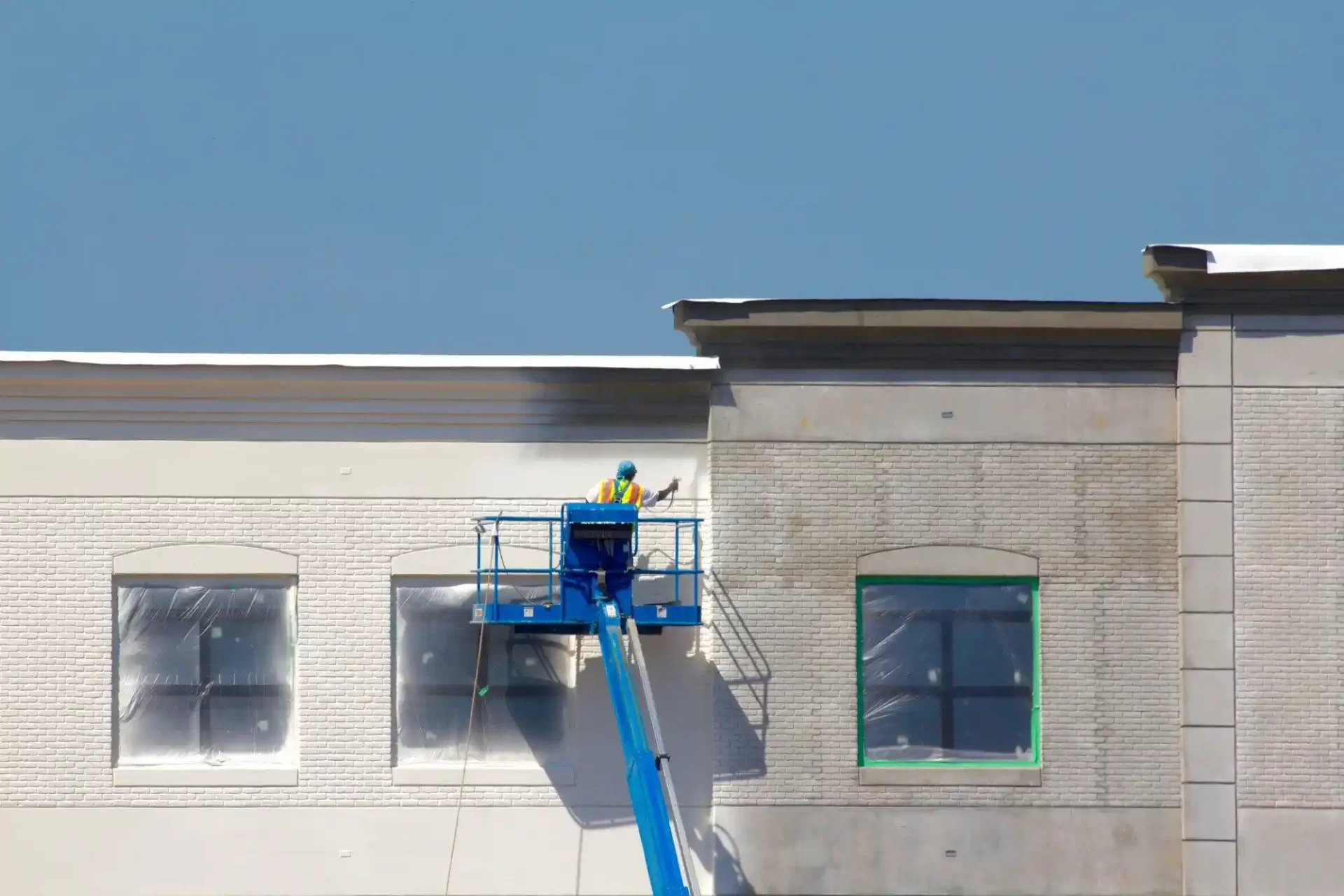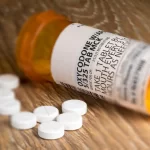Welcome to your comprehensive guide to avoid missteps in commercial building painting! We’ve all seen it, haven’t we?
A commercial building that catches the eye – but for all the wrong reasons. Picture that off-putting color clash, the hues that fade too quickly, or the streaks that suggest a hurried paint job.
Yet the painting of a commercial building isn’t just about aesthetics. It’s a protective shield against weather, representing the business housed within. It can significantly impact property value.
So, let’s dive into the mistakes that can make your commercial building painting project a costly disaster. Buckle up, and let’s get started!
1. Neglecting Surface Preparation
There’s a reason they say ‘good things take time’. When it comes to painting, surface preparation is not an optional step – it’s a must! Skipping this crucial stage will cause the paint to peel or blister in no time, turning into an eyesore. Cleaning and sanding the building’s exterior is vital to the paint’s durability.
Do this by removing dirt, dust, grime, or mold that could prevent the paint from adhering properly. Pressure washing is the most popular method for exterior cleaning. But remember to use a suitable pressure setting to avoid damage.
After cleaning, scrape off any existing paint that is peeling or flaking. You can do this manually using a paint scraper or a hot air gun.
Next comes sanding. It smoothens out any rough spots and provides an ideal surface for the new paint. You can use a sanding machine for large areas; manual sanding is more suitable for smaller areas.
Lastly, be sure to repair any damages on the surface, such as cracks or holes, before you begin painting. Use a suitable filler or sealant for this purpose. After the repairs, a final round of light sanding ensures a smooth surface ready for the new coat of paint.
2. Choosing Inappropriate Paint
Not all paints are equal; it goes beyond just picking a color. Always consider the building’s location and determine weather conditions and exposure to sunlight. The paint’s quality also matters, so invest in good commercial-grade paint.
Consider the type of finish that would best suit your commercial building, as well. High-gloss paints, for example, are durable and easy to clean. This makes them ideal for high-traffic areas.
Semi-gloss paints offer a nice balance of sheen and durability. It suits spaces where you want the paint to stand out subtly. Flat or matte finishes do not reflect light and are ideal for hiding imperfections on the wall, but they can be harder to clean.
Furthermore, remember to consider the interior of the building as well. For the interior, you might want to consider low-VOC or VOC-free paints. VOCs, or volatile organic compounds, are chemicals found in many paints. It can cause health problems when inhaled.
Low-VOC paints are a safer choice for office buildings, where people spend a notable part of their day. The best approach is to consult a professional painter or a paint supplier. They can provide expert recommendations based on the building’s specific needs.
3. Ignoring Primer
Primer is a crucial element in the process of interior painting. It provides a strong bond between the surface and the paint. It ensures optimal adherence, making it a vital step that never needs overlooking.
The application of PPrimer creates a smooth and even base. It allows the paint to glide on effortlessly. This not only reduces the number of coats required. It also extends the lifespan of the paint job, resulting in a more durable and long-lasting finish.
4. Disregarding Safety Measures
The use of safety measures is due to the risks associated with working at heights and handling hazardous materials. Use safety measures like scaffolding, harnesses, and protective gear.
5. Not Considering the Weather
Painting a commercial building during extreme weather conditions can harm the project’s outcome. High humidity levels or temperatures below 50°F can cause the paint to dry irregularly, resulting in a subpar finish. Always check the weather forecast before starting the project.
6. Failing to Communicate With Tenants or Employees
Tenants or employees often occupy a commercial building. This makes communication essential for a successful painting project.
Keep them updated on the schedule and ensure minimal disruption during business hours. It is crucial to maintain a positive working relationship.
7. Rushing the Project
Commercial building painting can be lengthy, and it may seem tempting to rush through it to cut disruption. But, this can result in sloppy workmanship.
This would ultimately cost more in repairs or repainting down the line. Always allow for enough time to complete the project thoroughly.
8. Skipping the Inspection
Before starting a painting project, it is crucial to inspect the exterior of the building for any signs of damage. This includes deteriorating wood or the presence of mold.
Evaluate the surface condition and identify potential issues that might compromise the paint job. By addressing these underlying problems, you can ensure a smooth and enduring finish that will stand the test of time.
9. Choosing Inexperienced Painters
Commercial buildings require skilled and experienced painters. They must understand the unique challenges and techniques involved.
Hiring an inexperienced painter may seem like a cost-saving measure. But it can lead to subpar results and additional costs in the long run.
10. Neglecting to Use Protective Coatings
Besides regular paint, protective coatings like weatherproof paints can extend the lifespan of an exterior. These extra layers add an extra barrier against the elements. It also helps prevent fading, cracking, or peeling.
11. Forgetting About Maintenance
Last, proper maintenance is essential to ensure the building’s exterior remains in good condition for years. Regular cleaning and touch-ups can help extend the lifespan of the paint job and keep the building looking fresh and inviting.
Wrapping up Your Commercial Building Painting Journey
Remember, commercial building painting is more than just choosing a color and applying it to the surface. It’s a meticulous process that requires proper planning, preparation, execution, and maintenance.
Avoid the mistakes above to ensure a high-quality finish. Remember these handy tips for your next project to ensure a vibrant masterpiece!
Did you learn a lot? Find everything you need to know, from industry insights to practical tips. We will help empower you to make the most informed project decisions. Visit our blog today to create vibrant and lasting impressions together!




